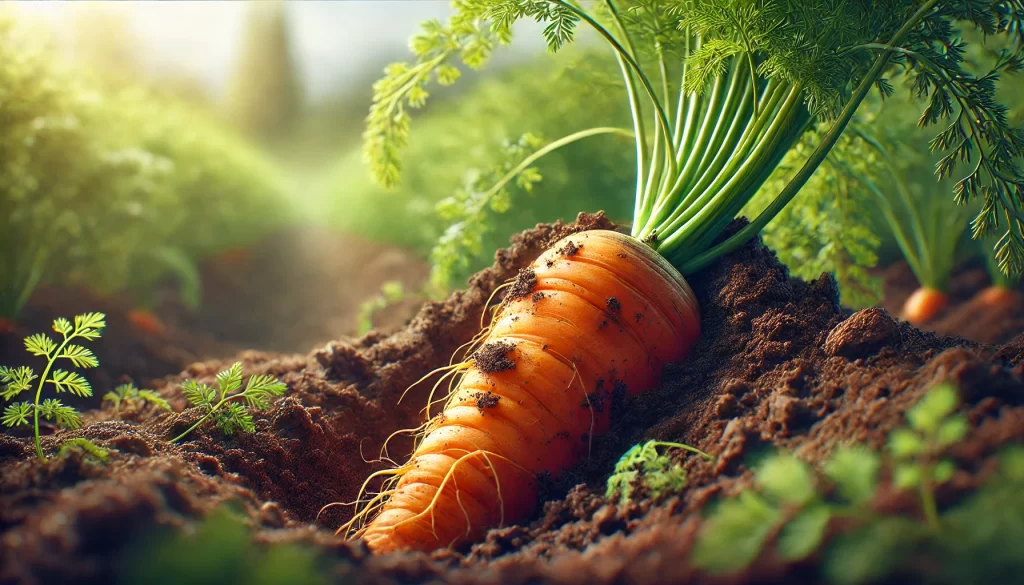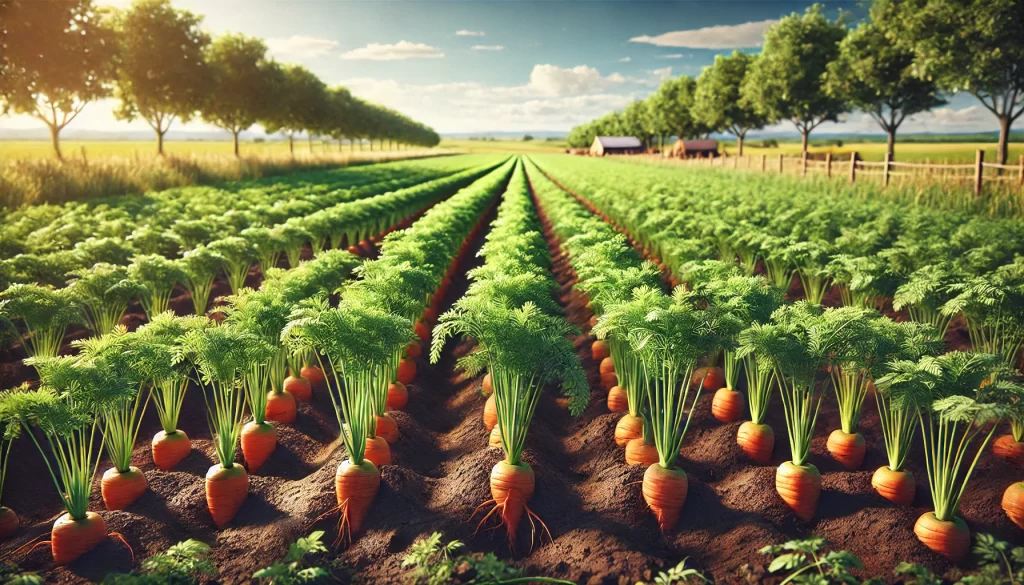The cultivation of carrots is a profitable and rewarding agricultural activity, but it requires specific technical knowledge to achieve optimal yields and high-quality products. This comprehensive guide is designed for producers, combining cultivation strategies, agronomic management, and plant nutrition tips to maximize carrot production.

Soil Preparation and Variety Selection
Selection of Appropriate Varieties
Choosing the correct carrot variety is essential:
- Native and Hybrid Carrots: Research varieties adapted to your climate and soil. Varieties like ‘Nantes’, ‘Chantenay’, or ‘Imperator’ offer different characteristics in size, shape, and flavor.
- Disease Resistance: Opt for varieties resistant to diseases such as rust or blight to facilitate phytosanitary management.
Soil Preparation
Optimal soil directly influences the quality of carrots:
- Soil Type: They prefer sandy and well-drained soils, with a pH between 6.0 and 6.8.
- Amendments and Fertility: Incorporate organic matter such as compost and sand to improve texture and fertility. Conduct a soil analysis to adjust nutrient levels.

Sowing and Germination Techniques
Sowing Methods
- Direct Sowing: Sow directly in the field when the soil reaches adequate temperatures (10°C to 25°C).
- Sowing Density: Maintain an appropriate density to avoid competition for nutrients, allowing optimal root development.
Seedling Care
- Initial Irrigation: Keep the soil uniformly moist during germination (7-14 days).
- Thinning: Perform thinning when seedlings reach about 5 cm in height to leave the ideal spacing between plants (5-7 cm depending on the variety).

Crop Management and Maintenance
Irrigation and Fertilization
- Irrigation: Provide constant and deep irrigation, preferably through drip irrigation systems to maintain a uniform moisture level without waterlogging the soil.
- Fertilization:
- Initial Phase: Apply phosphorus-rich fertilizers to stimulate root development.
- Growth Phase: Use balanced N-P-K (nitrogen, phosphorus, potassium) fertilizers and micronutrients to ensure healthy growth.
| Nutrient | Function in Carrot Cultivation | Recommendation |
|---|---|---|
| Nitrogen (N) | Promotes foliar growth | Apply in early stages and moderately throughout the cultivation |
| Phosphorus (P) | Root development | Apply in pre-sowing and transplanting |
| Potassium (K) | Root formation and resistance | Apply during growth and storage in roots |
| Micronutrients | Overall plant health | Foliar fertilizers if necessary |
Pest and Disease Control
- Common Pests: Monitor pests such as carrot fly, aphids, and nematodes. Use traps, biological control, and cultural practices for their management.
- Diseases: Prevent diseases such as root rot and rust. Implement crop rotation and natural fungicides if necessary.
Thinning and Weeding
- Thinning: Ensure sufficient space for tuber development by removing weak plants.
- Weeding: Perform regular manual or mechanical weeding to reduce competition for nutrients and water.
Carrot Harvest
Signs of Maturity
- Size and Color: Carrots should reach the characteristic size and color of the variety.
- Texture: A firm root without cracks indicates maturity.

Harvesting Techniques
- Cautious Extraction: Use manual tools or specialized machinery to lift the carrots without damaging them.
- Postharvest: Clean the roots, remove the soil, and store in cool and high humidity conditions to preserve their freshness.
Plant Nutrition Tips for Carrots
- Balanced Nutrients: A well-nourished soil results in carrots richer in beta-carotene, fiber, and other essential nutrients.
- Soil Health: Regular incorporation of organic matter improves nutrient availability and soil structure, benefiting the development of long and healthy roots.
Conclusion
Successfully cultivating carrots requires a combination of appropriate variety selection, soil preparation, sowing techniques, agronomic management, and pest control. By following this comprehensive and scientific approach, producers can maximize the quality and yield of their carrot crops, ensuring nutritious and profitable products.
References
- Bliss, F.A. (2000). Vegetable Crop Production. CABI Publishing.
- Kader, A.A. (2005). Postharvest Technology of Horticultural Crops. University of California Agriculture and Natural Resources.
- Pedigo, L.P., & Rice, M.E. (2009). Entomology and Pest Management. Pearson.
 AgronoBlog – Agriculture Blog
AgronoBlog – Agriculture Blog 


